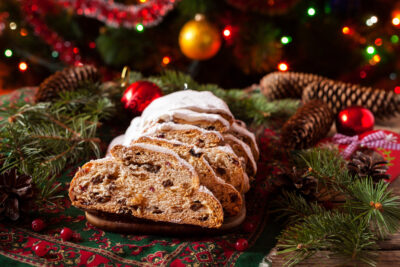
As the song goes, it’s the most wonderful time of the year! Christmas is a joyous celebration when we exchange gifts and enjoy good food with loved ones. Preparing a festive feast can take up a lot of time and energy though. That’s why it can really help to get a head start on your Christmas baking so read on and discover more about some of the well known seasonal staples and more festive food ideas.
From Christmas pudding to panettone, there are plenty of opportunities to flex your baking skills during Yuletide. If you’re going to be catering for a lot of people then preparation is key. Also, making your Christmas bakes and cakes in advance will allow extra time for the flavours to develop.
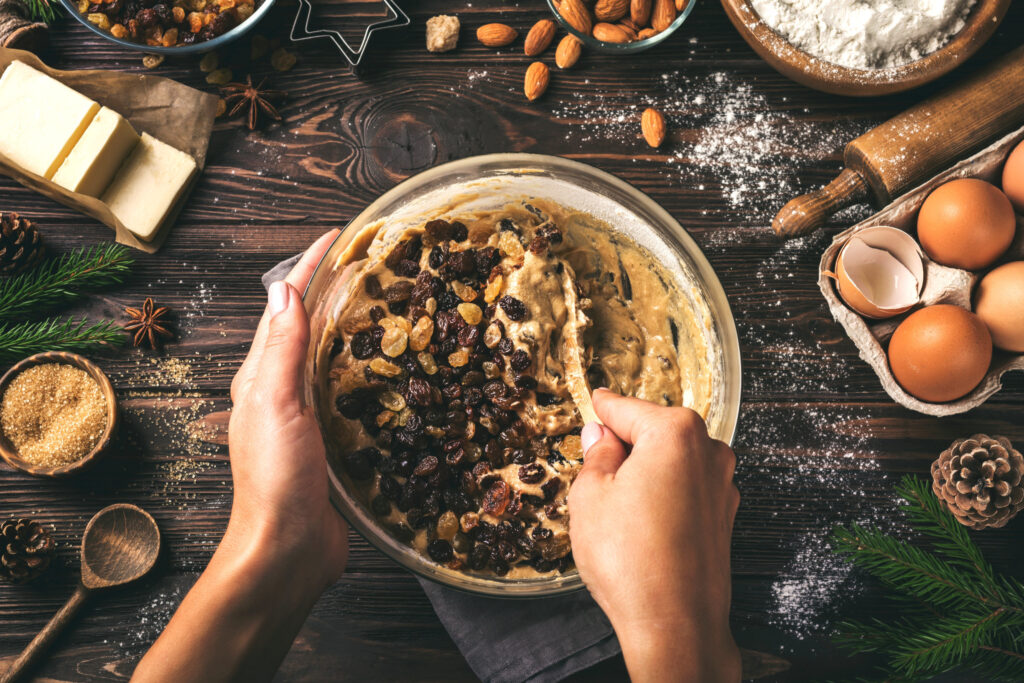
Stir-up Sunday
Stir-Up Sunday provides a great opportunity to make a start on your Christmas pudding prep, whilst getting together with family. Traditionally, families gather to make Christmas puddings, with everyone taking turns to make a wish as they stir the mixture. The occasion has been celebrated since Victorian times and traditionally takes place on the last Sunday before Advent. This year it falls on 26 November.
According to custom, the pudding mixture should be stirred in the direction of east to west. This symbolises the journey of the Three Wise Men who travelled from the east to visit the baby Jesus.
The origins of Stir-Up Sunday are said to date back to the 16th century. The name reportedly derives from the Book of Common Prayer of 1549. The prayer for the last Sunday before Advent begins with the words: “Stir-up, we beseech thee, O Lord, the wills of thy faithful people.”
If you’re catering for seasonal guests with a gluten intolerance why not try our gluten-free and wheat-free Christmas pudding recipe this year.
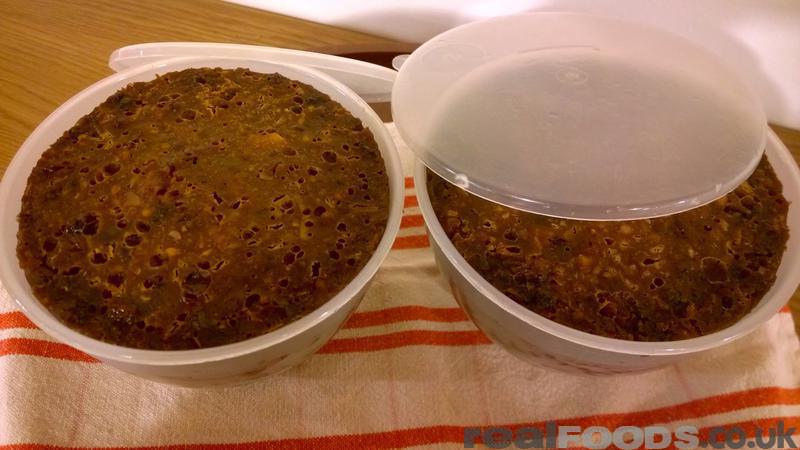
If you’re getting the family together for Stir-Up Sunday, or just fancy getting a head start on your festive prep, then read on for some hints and tips to help with your Christmas baking.
Christmas pudding
Christmas pudding is a staple of most Christmas dinners across the UK. In fact, we consume 25 million of these delicious desserts every year.
The origins of the Christmas pudding date back to the 14th century with a porridge-like dish known as “frumenty”. By the 17th century, the recipe had been adapted to include dried fruit and alcohol. But, it was during the Victorian era that the dish was transformed into the pudding we know and love today. Traditionally, Christmas puddings should include 13 ingredients, symbolising Jesus and the 12 disciples. These are: raisins, currants, suet, brown sugar, breadcrumbs, citron, lemon peel, orange peel, flour, mixed spices, eggs, milk and brandy.
Although admittedly delicious, the traditional Christmas pudding isn’t the healthiest of desserts! If you are looking for a vegan, fat-free, sugar-free Christmas pudding recipe then look no further than this vintage recipe. It’s from our partner, Real Foods, and dates back to the 1970s. The natural sweetness comes from a combination of apple juice, dried mixed fruit and spices including ginger, cinnamon and nutmeg. The not-so-secret ingredient is a measure of Guinness which adds extra flavour and depth.
This recipe is perfect for making ahead and can be stored in a cool place before Christmas day, when it simply needs steaming and serving. For some added decadence, serve it with our vintage vegan brandy butter, which is made from soaked cashew nuts, apple juice and a hint of brandy.
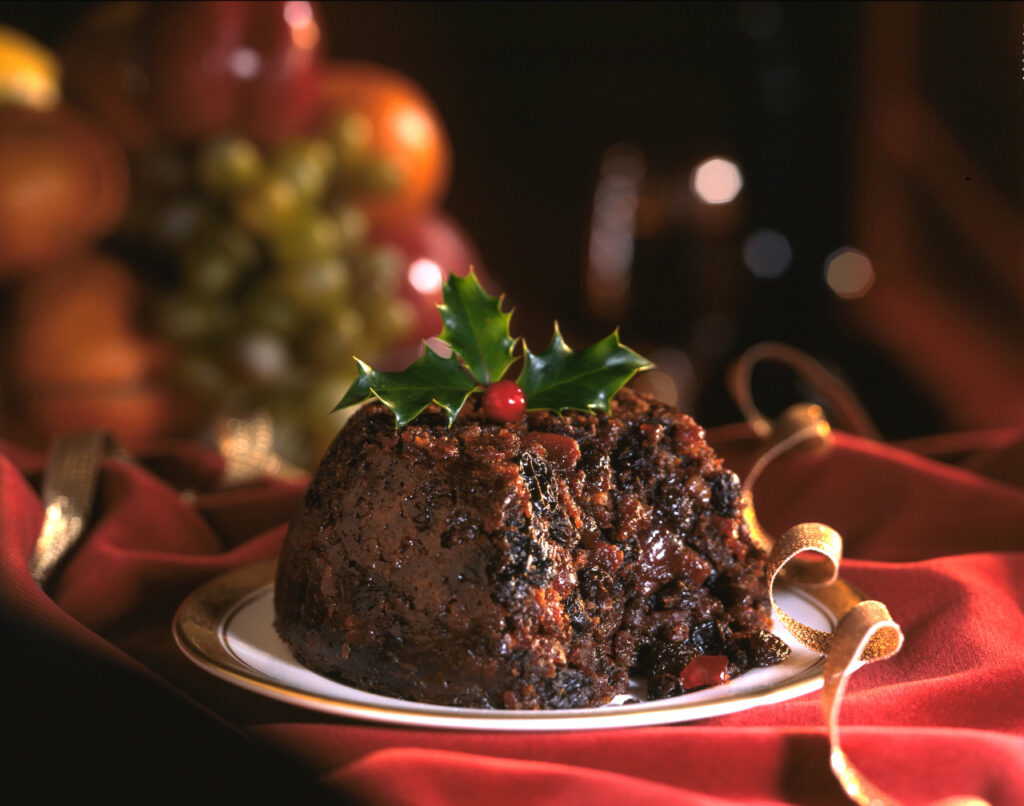
Mince pies
Each year, 175 million mince pies are eaten in the UK, proving that they are a fruity festive favourite. However, did you know that before the Victorian age, mince pies were typically filled with meat? In Tudor times, they were made from a combination of dried fruit such as raisins, prunes and figs. Other ingredients included lamb or mutton and spices such as cinnamon, cloves and nutmeg. In the 19th century, the meat filling changed to minced beef. By late Victorian times the meat was dropped altogether in favour of fruit.
Try out our recipe which is free from wheat, gluten, nuts and added sugar. There’s the option to include vegetable suet, and you can replace the butter with a dairy-free spread. The egg can also be omitted.
If you’re short on time, you could skip the first three steps of the recipe and use readymade mincemeat instead. These delicious mince pies can be stored in an airtight tin and served cold or heated up.
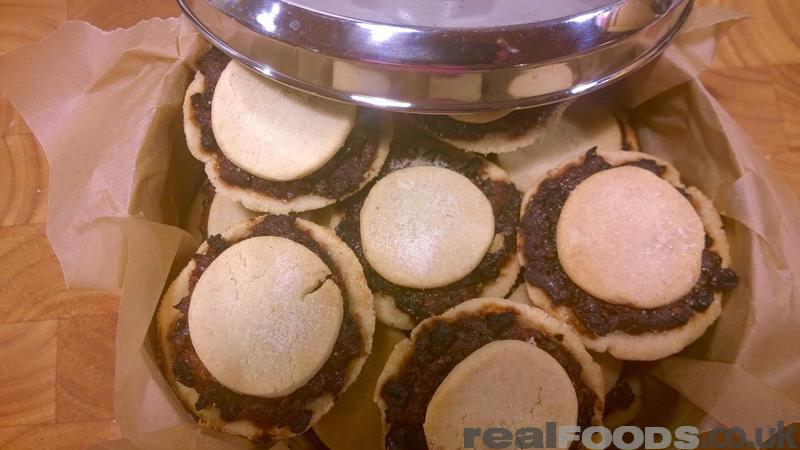
Christmas cake
The traditional Christmas cake took the form of plum porridge and was usually eaten after a day of religious fasting. In the 16th century, the oats were dropped and ingredients such as fruit and marzipan were added along with spices. During the Victorian age, the Christmas cake that we know today replaced the Twelfth Night cake, which had previously been popular in the 18th and 19th centuries.
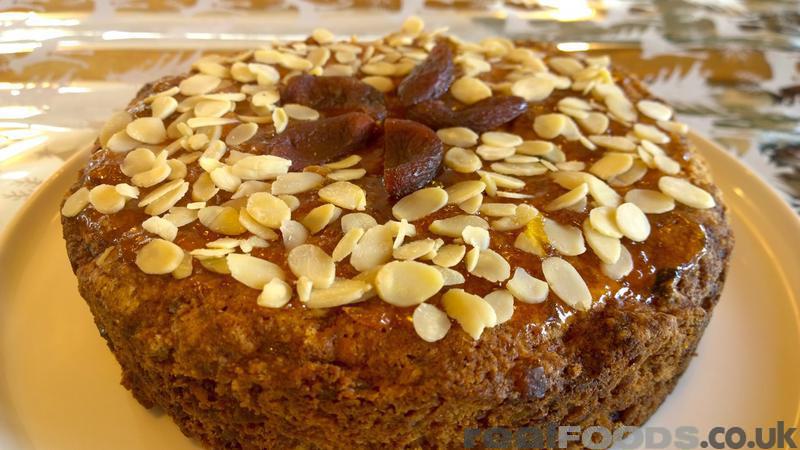
Our Christmas cake recipe is another vintage one from the Real Foods archives. It’s a great recipe to make on Stir-Up Sunday, as it will benefit from maturing over several weeks or months. But equally it can be eaten straight away. For a reduced sugar option, swap the muscovado sugar for malt extract or pear and apple spread. You can also swap the cherries, peel, sugared pineapple and ginger for dried bananas, mango or dates. For a vegan, gluten-free and alcohol-free alternative, try this recipe. Or check out this gluten-free Dundee cake, which is a lighter version of the traditional Christmas cake recipe minus the icing.
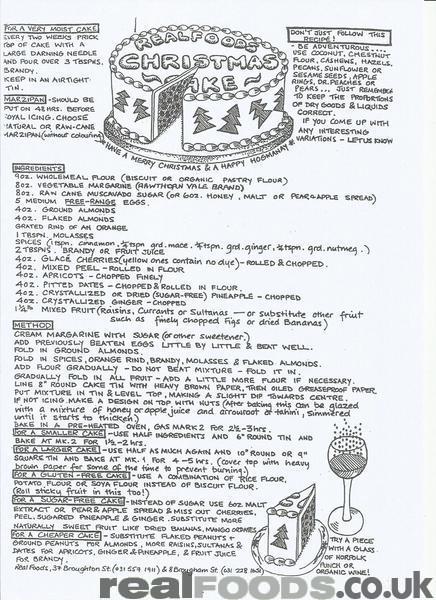
When you are browsing for ingredients, do remember that all the products stocked by Real Plastic Free are of the highest quality and are available in organic and non-organic varieties. If you are looking to keep costs down, then take a look at our Essentials range, which could help you to save a few pennies!
Stollen
Originally from Saxony in Germany, stollen is a yeasted cake made from dried fruit, nuts, marzipan and spices. Its long, oval shape is said to symbolise the baby Jesus, wrapped in swaddling. Stollen is another great option to make ahead of time as it will last for several months if stored in a cool, dry place. The rich, spicy, fruity flavour will also develop with time.
Take a look at this recipe, which is made with less sugar and butter for a healthier take on the traditional German version. The recipe uses Real Foods’ pre-packed organic fruit, which, like all our products, is packed in small amounts for freshness, using home-compostable film. When you are shopping for ingredients, don’t forget to look up the pre-packed items stocked here at Real Plastic Free. All our orders are delivered in entirely recyclable materials, which helps to reduce excess waste during the Christmas season.

Panettone
Originating from Milan, Italy, panettone is a tall, leavened bread with a domed shape, which is traditionally eaten during the Christmas and New Year period. It is made from a sweet, rich dough studded with raisins and candied fruits. This tasty Italian delicacy can be made vegan by swapping the milk and butter for dairy-free versions, while the wholemeal flour can be switched for a gluten-free alternative.
In Milan it is customary to keep a slice of panettone to eat on 3 February, which is the feast day of St Blaise. If you don’t fancy baking your own panettone, then there are plenty of readymade options available, including low-sugar varieties.
Gingerbread biscuits
From simple gingerbread men to entire gingerbread houses, these sweet and spicy treats have been associated with Christmas for several centuries. Gingerbread houses date back to 16th century Germany and grew in popularity thanks to the fairy tale of Hansel and Gretel. The humble gingerbread man is said to have originated in the court of Queen Elizabeth I, after the queen had the idea of decorating the biscuits to look like visiting dignitaries.
As with so many Christmas customs, gingerbread biscuits became associated with the festive season during Victorian times. When Queen Victoria and Prince Albert introduced the idea of decorating Christmas trees, it became customary to use gingerbread biscuits as an affordable form of decoration.
These delicious biscuits are flavoured with ginger, cinnamon and allspice pimento, and will fill your kitchen with festive scents as they bake. If you don’t want to hang them from the tree, then enjoy them with a warming cuppa or a glass of mulled wine!

Hopefully, this blog post will have given you plenty of tips and ideas for your Christmas baking. Do take a look at our Christmas shop for a wide variety of festive treats, including vegetarian, vegan, organic and free-from options, all housed in plastic-free packaging. From everyone at Real Plastic Free, we wish you a happy, healthy and zero-waste Christmas.







